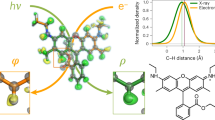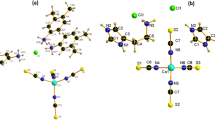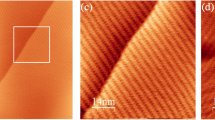Abstract
One particular monocarboxylic acid derived from cyanocobalamin can be grown in very large crystals on which both X-ray and neutron diffraction measurements have been made. Calculations lead to the placing of some 205 atoms in the crystal asymmetric unit, including 98 hydrogen atoms, and thus to the detailed definition of the chemical structure of the molecule.
This is a preview of subscription content, access via your institution
Access options
Subscribe to this journal
Receive 51 print issues and online access
$199.00 per year
only $3.90 per issue
Buy this article
- Purchase on SpringerLink
- Instant access to full article PDF
Prices may be subject to local taxes which are calculated during checkout
Similar content being viewed by others
Author information
Authors and Affiliations
Rights and permissions
About this article
Cite this article
NOCKOLDS, C., WATERS, T., RAMASESHAN, S. et al. Structure of a Monocarboxylic Acid Derivative of Vitamin B12: Crystal and Molecular Structure from X-ray Analysis. Nature 214, 129–130 (1967). https://doi.org/10.1038/214129a0
Issue date:
DOI: https://doi.org/10.1038/214129a0
This article is cited by
-
Xray and neutron diffraction studies of the crystal and molecular structure of the predominant monocarboxylic acid obtained by the mild acid hydrolysis of cyanocobalamin: Outline
Proceedings / Indian Academy of Sciences (1984)
-
X-ray and neutron diffraction studies of the crystal and molecular structure of the predominant monocarboxylic acid obtained by mild acid hydrolysis of cyanocobalamin. Part I. X-ray diffraction studies of airdried crystals
Proceedings / Indian Academy of Sciences (1984)
-
X-ray and neutron diffraction studies of the crystal and molecular structure of the predominant monocarboxylic acid obtained by mild acid hydrolysis of cyanocobalamin. Part II. X-ray diffraction studies of wet crystals
Proceedings / Indian Academy of Sciences (1984)
-
X-ray and neutron diffraction studies of the crystal and molecular structure of the predominant monocarboxylic acid obtained by mild acid hydrolysis of cyanocobalamin. Part III. Neutron diffraction studies of wet crystals
Proceedings / Indian Academy of Sciences (1984)



